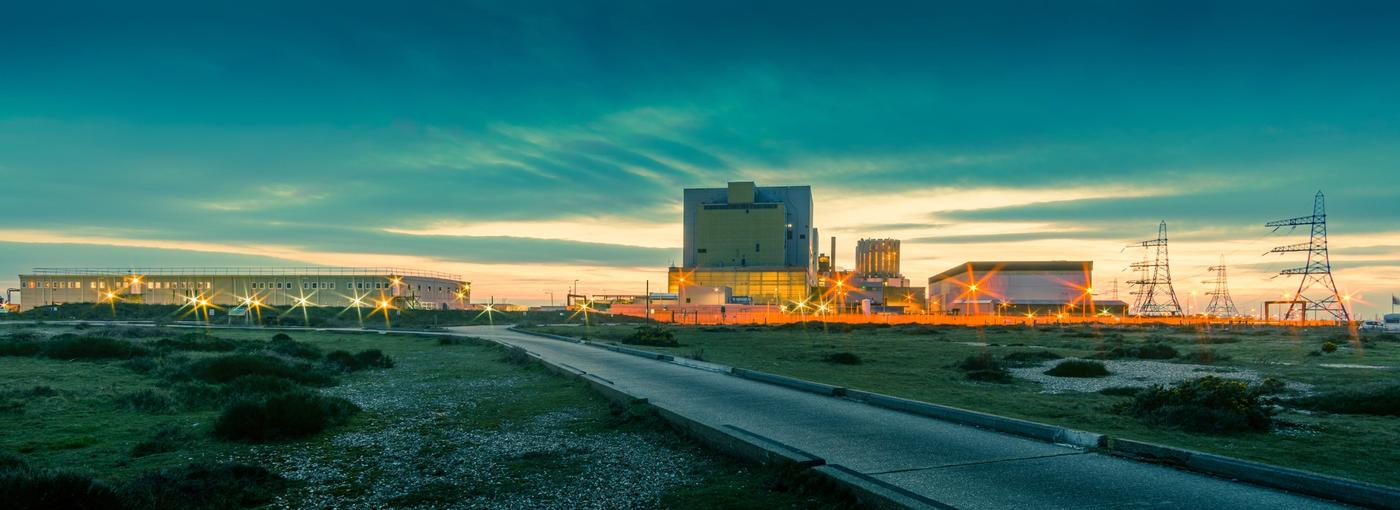Accelerating Innovation and Cloud Adoption at EDF with a Cloud-Native Landing Zone and Operating Model in Just Ten Weeks
The Client
Électricité de France (EDF) is a French multinational electric utility company. It is one of the world’s largest producers of electricity, operating a diverse portfolio of 120+ gigawatts of generation capacity in Europe, South America, North America, Asia, the Middle East, and Africa.
The Challenge
EDF UK wanted to make use of the compelling benefits of public cloud to accelerate innovation and bring new digital services to their customers, quickly and securely.
But truly leveraging the full potential of public cloud requires not only a suitable cloud platform, but an aligned operating model that outlines the ways of working that help to get the most out of the cloud.
EDF UK had already migrated workloads to cloud, but their existing IT operating model and ways of working had not been updated to reflect cloud-native best practices and on-premises processes were hindering their cloud adoption.
For a large organisation like EDF, the cloud operating model must be first and foremost, flexible, to allow for multiple levels of service (‘multi-modal delivery’) to meet diverse business needs.
Accordingly, their cloud platform had not been built in a cloud-native fashion. Automation was not embedded into working practices, meaning developers could not self-provision the core resources needed and only catered for the traditional on-premise, virtual-machine based workloads that had been migrated.
The existing solution lacked the flexibility required for the multi-modal delivery EDF needed and was proving a bottleneck on business agility and value that the cloud could provide.
The Solution
Contino helped EDF UK to put in place an end-to-end framework, an approach that would provide the business agility and value they needed. The team was brought onboard to do two things:
- Design a new, multi-modal cloud operating model
- Build a new Landing Zone in AWS that was truly aligned with that operating model
1. Multi-Modal Cloud Operating Model
The objective of a multi-modal cloud operating model is to enable EDF’s diverse teams by providing quick and simple access to the different cloud services they need.
The new model supports a trio of blended responsibility modes that are designed to meet the needs of teams with varying degrees of cloud maturity and service requirements. For example, teams with no cloud expertise (e.g. marketing) will have access to managed services to run applications they might need. On the other hand, skilled dev teams focused on innovation will have access to flexible services to run themselves in line with their requirements.
The new cloud operating model enabled the following technical outcomes:
- Innovation opportunities: access to cloud-native services enabled rapid experimentation
- Reduced lead times: fully automated workflows meant no dependency on manual tasks
- Focus on the customer: self-service and self-sufficiency meant teams were free to deliver to focus on the customer
- Accelerate deployments: approved reusable components reduced friction from getting from ideation to production.
- Federated Operations: allowed Settlers and Pioneering teams to move towards a “ you build it - you run it” model in-line with DevSecOps and SRE principles.
2. Building a Cloud-Native AWS Landing Zone
Contino then helped EDF to design and build a flexible AWS Landing Zone (LZ) that would underpin their new operating model. The LZ was principally designed to cater to EDF’s multi-modal cloud operating model and to align with cloud-native development and deployment methodologies.
Impact of the Landing Zone
The LZ supports EDF’s multi-modal operating model, enabling product teams who develop in a rapid and iterative cloud-native fashion whilst also supporting use cases and teams that follow a more waterfall ITSM delivery pattern. This allows EDF’s Enterprise IT function to work with the various development teams within EDF and manage their requirements based on their engineering maturity, development needs and business value they intend to deliver for the organisation.
New projects and teams can be rapidly onboarded. Everything a developer needs to deploy a new product can be ready from a standing start in under two hours.
The Business Outcome
Contino helped EDF UK to design and roll out a new, cloud-native operating model and LZ in ten weeks. The operating model took only six weeks to design and an operationally minimal AWS Landing Zone was delivered within one month.
EDF now has a modern cloud-native launchpad to deploy new applications and services onto. This gives EDF a number of critical business benefits:
Rapidly Deliver Business-Critical Applications
EDF can now swiftly deploy new business-critical applications. This was critical during the Covid-19 crisis, for example, when Contino and EDF were able to deploy AWS WorkSpaces in only three weeks to enable EDF’s global workforce to be online and effective remotely.
Developers Empowered to Innovate
The security, speed and automation of EDF’s new platform and operating model accelerates innovation in three ways.
Firstly, widespread automation means developers spend much less time doing un-differentiating heavy lifting tasks and can focus on delivering services to their customers.
Secondly, a secure route-to-live means that new applications can be deployed in a more secure and reliable manner whilst ensuring compliance and controls can be constantly tracked and assured.
Thirdly, access to cloud-native tools means developers are empowered to experiment at speed and scale.
Future Proof Cloud Platform
The platform has been built with best practice cloud-native methodologies in mind, creating a stable foundation for tomorrow. This allows EDF to build additional modules and capabilities onto the platform in-line with their aggressive cloud-first strategy.
Secure, Rapid Route-to-Live
There is now a secure route-to-live for development to deploy their services with confidence, knowing that automated guardrails are in place to ensure security and compliance of their infrastructure, pipelines and code.
By offering Continuous Delivery and Continuous Compliance as a core capability, Contino allowed for automated security and compliance checks to become part of the fabric in the team’s delivery process.
Cloud Cost Controls with FinOps
The LZ is integrated with Cloudability, a cloud-native FinOps tool to provide cost visibility across the entire environment. This has already enabled tracking and the attribution of cloud spend across the teams and will be pivotal in maximising EDF’s cloud return on investment over the long term.
Through an early focus on FinOps, the often exhaustive rework required to allow for full cost attribution has been negated. The fundamental practices are embedded and enforced via the LZ allowing for EDF to easily progress on the journey to FinOps maturity.
Conclusion and Next Steps
The Cloud Operating Model and Landing Zone has now enabled more than 55 development teams to deliver differentiated customer experiences on Public Cloud and forms a key part of EDF’s Enterprise IT strategy.
EDF are on the journey to applying this operating model to expand their in-house engineering excellence and leverage the landing zone to accelerate their cloud-first strategy.





